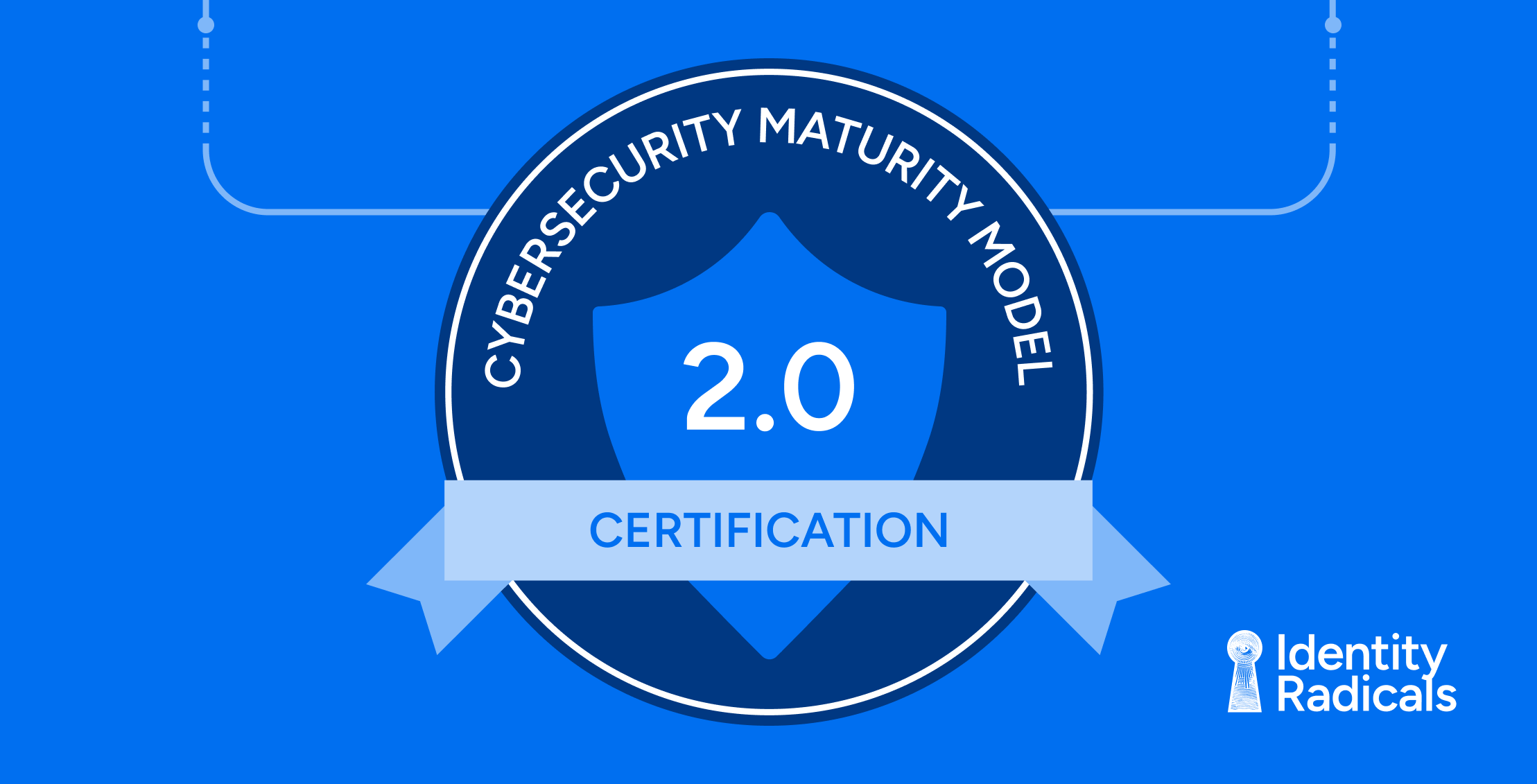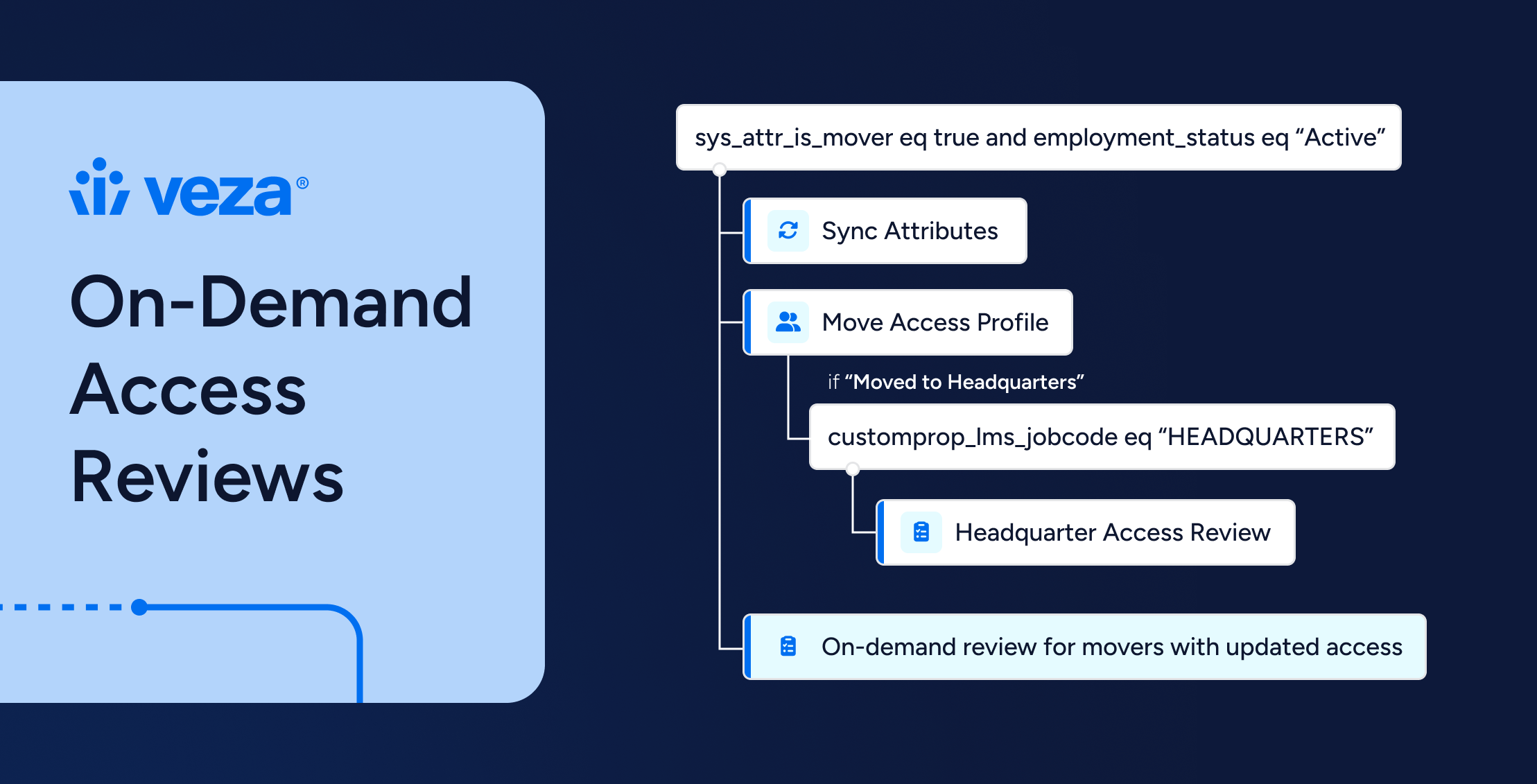A Modern Approach to Access Control and Data Security

Introduction
With CMMC 2.0 requirements rolling out in Q1 2025, contractors and subcontractors working with the U.S. Department of Defense (DoD) must strengthen safeguards for Controlled Unclassified Information (CUI) and Federal Contract Information (FCI). Compliance—especially at Level 2—demands demonstrable control over access to sensitive systems and data. This blog explores how organizations can align with CMMC 2.0’s core access control domains using a modern, scalable approach—highlighting capabilities enabled by platforms like Veza without being vendor-dependent.
Understanding CMMC 2.0 Access Control Requirements
CMMC 2.0 outlines a framework of cybersecurity maturity levels built on multiple security domains. Four of the most access-related domains—Access Control (AC), Audit and Accountability (AU), Configuration Management (CM), and Security Assessment (CA)—are critical to achieving Level 2 compliance. Below is a breakdown of how modern access governance platforms, including Veza, can support each domain.
1. Access Control (AC)
Access Control is foundational to CMMC 2.0. Organizations must manage “who has access to what, when, and why”, across complex hybrid environments. Platforms like Veza provide real-time visibility and control, helping enforce least privilege and need-to-know principles through:
| Automated enforcement of least privilege access | Dynamic privilege right-sizing based on usage patterns Automated detection and revocation of dormant privileges Role-based access control (RBAC) templates |
| Granular CUI access controls | Data classification integration Context-aware access policies Automated enforcement of need-to-know principles |
| Separation of duties (SoD) enforcement | Conflict detection in role assignments Automated policy validation Cross-system privilege analysis |
| Comprehensive audit trails | Historical access changes Approval workflows Policy modifications |
2. Audit and Accountability (AU)
Auditability is central to detecting and investigating potential access violations. Tools like Veza support these requirements by translating raw access data into actionable intelligence:
| Comprehensive Access Logging | Veza’s Activity Monitoring feature captures detailed logs of access-related events, including authentication, permission changes, and data access attempts. |
| Advanced Analytics | The platform employs sophisticated analytics to establish behavioral baselines, detect anomalies, and assign risk scores to access patterns. |
| Investigation Tools | Veza offers interactive visualization tools and temporal analysis capabilities, enabling cross-system correlation for effective incident investigation. |
| Automated Reporting | The platform supports customizable report templates and scheduled distribution, which can be tailored to meet compliance requirements |
3. Configuration Management (CM)
Consistent enforcement of access policies across systems is critical for a defensible CMMC posture. Access governance tools assist in:.
| Baseline Access Configuration | The platform enables template-based provisioning and can detect configuration drift across various systems. |
| Change Tracking | Veza’s access intelligence can be used to document change requests, route approvals, and analyze the impact of configuration changes. |
| Security Configuration Enforcement | The platform supports policy-based controls and continuous validation of configurations. |
4. Security Assessment (CA)
Security assessments must go beyond checklists. Organizations need live visibility into policy adherence and the ability to demonstrate ongoing effectiveness. Platforms like Veza support:
| Continuous Control Monitoring | Veza provides real-time policy compliance checking and gap analysis across multiple systems. |
| Control Effectiveness Evaluation | The platform offers metrics on control effectiveness and can track remediation efforts. |
| System Security Plan Support | Veza can assist in generating documentation, tracking configurations, and managing changes in access permissions, which are crucial for maintaining system security plans. |
Additionally, Veza’s platform includes over 500 pre-built queries that can detect privileged users, dormant permissions, policy violations, and misconfigurations. This capability enhances the platform’s effectiveness across all these domains by providing actionable insights and supporting automated remediation efforts.
Organizations should integrate these capabilities into their broader compliance and security strategies to fully meet CMMC requirements.
Veza’s Comprehensive Approach to CMMC Access Control
To operationalize CMMC 2.0, organizations need to align technical solutions with specific control requirements. Below is how a platform like Veza can support key practices across CMMC Level 1 and Level 2, particularly in the Access Control domain.
Below is a breakdown of how Veza’s features map to specific CMMC 2.0 Access Control requirements.
| CMMC Requirement | Platform Support Summary |
| AC.1.001: Limit system access to authorized users and devices | Centralized access visibility across systems to flag unauthorized access |
| AC.2.007: Enforce least privilege | Visualize effective permissions; remove excess access via usage insights |
| AC.2.016: Implement RBAC | Analyze/manage user roles across environments with policy templates |
| AC.2.136: Monitor remote access | Detect anomalies in remote session behavior |
| AC.2.019: Control public system exposure | Map access to SaaS/cloud systems and flag risky exposure patterns |
| AC.2.021: Use MFA | Support enforcement by identifying accounts with missing or downgraded MFA |
| AC.2.022–25 | Manage accounts, wireless, mobile |
Applying Access Governance to Core CMMC Practices
The practical implementation of CMMC requires solving real-world identity and access challenges. Below are examples of how access governance platforms like Veza support key practices:
- Privileged Access Monitoring: Detect and respond to privilege escalation by triggering alerts and verification workflows when high-risk access is granted across systems.
- Non-Human Identity Management: Maintain oversight of service accounts and automation identities by continuously monitoring usage patterns and access entitlements.
- Data System Access: Extend visibility and control to unstructured and shared datasets—including files, folders, and repositories—across your entire environment.
- SaaS & Cloud Access: Apply consistent access policies and governance logic across hybrid and multi-cloud applications, ensuring alignment with least privilege and Zero Trust principles.
- Identity Threat Detection & Response (ITDR): Surface access anomalies in real time—such as spikes in usage or unusual role assignments—within the context of identity, system, and data sensitivity.
Key Veza Features Supporting CMMC Access Control
- Access Graph: Provides a real-time view of who can take what action on what data.
- Access Reviews and Certifications: Streamlines access reviews with visibility into effective permissions.
- Least Privilege Enforcement: Identifies and remediates over-provisioned access.
- Integration with Multiple Systems: Connects to cloud, on-premise, and SaaS applications.
- Non-Human Identity (NHI) Management: Helps find and fix dormant, misconfigured, or over-privileged non-human identities.
Implementation
CMMC compliance is not a one-time event—it requires an adaptive, phased implementation strategy. Organizations deploying platforms like Veza should consider:
Benefits
| Unified Visibility | Single pane of glass for all access relationships Real-time monitoring of access changes Integration with existing identity providers and systems |
| Automated Compliance | Pre-built controls mapped to CMMC requirements Automated reporting for audits Continuous monitoring and alerts |
| Risk Reduction | Identification of excessive permissions Detection of access anomalies Prevention of unauthorized access |
Best Practices
1. Assessment Phase
Immediate Actions:
- Conduct a comprehensive discovery of all systems containing CUI/FCI
- Map existing identity providers and access management tools
- Document current access control processes and policies
- Identify high-risk access patterns and excessive permissions
Key Considerations:
- Prioritize critical systems and sensitive data repositories
- Engage stakeholders from security, IT, and business units
- Define success metrics and compliance requirements
- Establish baseline security posture measurements
2. Deployment Phase
Technical Implementation:
- Deploy Veza collectors across all relevant systems
- Configure integration with existing identity providers
- Establish a connection to data classification tools
- Set up initial access policies and controls
Process Development:
- Create access review workflows
- Establish change management procedures
- Define incident response processes
- Document operational procedures
3. Maintenance Phase
Operational Tasks:
- Conduct regular access reviews (recommend quarterly)
- Monitor policy effectiveness and adjust as needed
- Perform periodic entitlement cleanup
- Update documentation based on changes
Continuous Improvement:
- Regular assessment of new access patterns
- Refinement of automation rules
- Integration with new systems and tools
- Update of policies based on threat landscape
Best Practices for Sustainable CMMC Compliance
- Quick Wins First: Remove known excessive access and flag high-risk permissions
- Automate What You Can: Access reviews, alerts, and reports reduce manual effort
- Stay Audit-Ready: Keep detailed logs, exceptions, and documented decisions
- Communicate Regularly: Maintain visibility with stakeholders and exec sponsors
- Track What Matters: Monitor metrics like review completion rates, time-to-remediate, and access exceptions
Conclusion
CMMC 2.0 introduces a higher bar for identity and access control—one that demands both rigor and adaptability. By adopting access governance platforms that unify visibility, automate controls, and reduce risk, organizations can not only achieve CMMC Level 2 compliance but also strengthen their long-term cybersecurity posture.
Veza empowers organizations to move beyond checkbox compliance to establish lasting, scalable security practices that protect sensitive information across their entire digital ecosystem.
References
https://dodcio.defense.gov/Portals/0/Documents/CMMC/ModelOverview.pdf
https://dodcio.defense.gov/Portals/0/Documents/CMMC/AG_Level1_V2.0_FinalDraft_20211210_508.pdf





